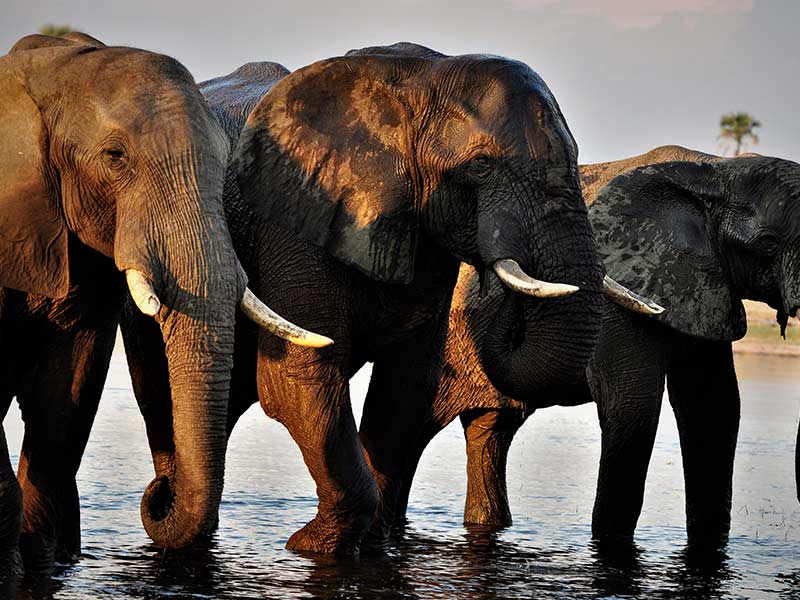
- Hwange National Park is the biggest of them all
- Victoria Falls is the most sought after tourist destination
- For more stories go to byolife.co.zw
Embark on a journey through Zimbabwe’s spectacular natural heritage. We explore its most beloved protected landscapes. This guide unveils 10 of the country’s premier national parks. Each is a unique bastion of biodiversity. They offer captivating wildlife encounters and awe-inspiring vistas. You can find adventure from the thunderous Victoria Falls to the remote wilderness of Gonarezhou. These destinations promise breathtaking scenery and a deep connection to the heart of Africa.
Also read: The 5 Best National Parks In Zimbabwe
1. Victoria Falls National Park:

Victoria Falls National Park protects the Zimbabwean side of the iconic Mosi-oa-Tunya. This means “The Smoke That Thunders.” It is a premier global destination and a UNESCO World Heritage Site. The park gives visitors front-row access to the largest curtain of falling water on earth. This natural wonder provides a breathtaking experience. It is surrounded by a lush rainforest ecosystem created by the Falls’ perpetual spray.
The main activity is an unforgettable walk. A network of scenic viewpoints lines the cliff opposite the cascade. These spots deliver some of the planet’s most spectacular vantage points. They also offer incredible photography opportunities. Beyond the waterfall, the park is home to diverse wildlife. Elephants, buffalo, and various antelope species inhabit the surrounding riverine habitat.
The park complements the adventure activities in Victoria Falls town. It stands as a sanctuary of natural beauty and awe-inspiring scenery. This makes it an essential stop on any Southern African itinerary. It offers a profound connection to one of the continent’s most powerful landmarks.
Ideal for: First-time visitors to Africa, families, photographers, honeymooners, and any traveler seeking to witness a world-class natural phenomenon.
Key Highlights:
- UNESCO World Heritage Status: Recognized as a site of outstanding universal value.
- The Main Viewpoints: Offers the most comprehensive and direct frontal views of the entire width of the Falls.
- The Rainforest: Walk through a unique ecosystem sustained by the constant mist from the waterfall.
- Iconic Photography: Home to iconic lookout points like Danger Point and the breathtaking view of the Victoria Falls Bridge and Main Falls.
- Proximity to Town: Easily accessible from Victoria Falls town, allowing for a visit of a few hours or a full day
2. Hwange National Park:
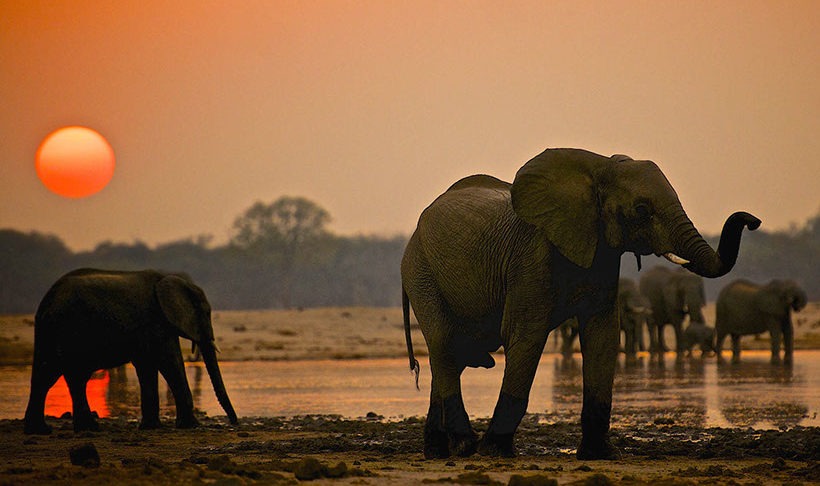
As Zimbabwe’s largest and most famous national park, Hwange National Park is the beating heart of the country’s safari industry and a cornerstone of biodiversity conservation. This vast expanse of diverse habitats, from Kalahari sandveld to teak forests, provides a sanctuary for one of the largest elephant populations on earth and an astounding density of wildlife, ensuring world-class game viewing year-round.
Hwange is renowned for its prolific predator diversity, with strongholds of endangered African wild dog, lion, and leopard. The park’s lifeblood is a network of managed waterholes, which become dramatic hubs of activity, especially in the dry season, offering unparalleled photography opportunities and safari adventures right from your vehicle or a guided hide. This makes it an exceptional destination for both first-time visitors and seasoned safari enthusiasts.
With a wide range of accommodation, from luxury lodges to rustic camps, Hwange delivers an authentic African safari experience that is both accessible and deeply immersive. Its commitment to sustainable wildlife management and community-based tourism initiatives ensures that every visit contributes directly to the preservation of this incredible wilderness for generations to come.
Ideal for: First-time safari-goers, wildlife photographers, elephant enthusiasts, families, and anyone seeking a classic Big Five experience with excellent guiding and infrastructure.
Key Highlights:
- Zimbabwe’s Largest Park: A vast and diverse ecosystem supporting huge herds of elephant and buffalo.
- Big Five Destination: Renowned for reliable sightings of lion, leopard, elephant, buffalo, and rhino (on the periphery).
- Predator Capital: One of the best places in Africa to see the endangered African wild dog.
- Panoramic Waterholes: Strategically placed hides offer intimate, close-range wildlife viewing at water sources.
- Accessible Adventure: Excellent road and air links with a variety of lodges to suit all preferences.
3. Mana Pools National Park:
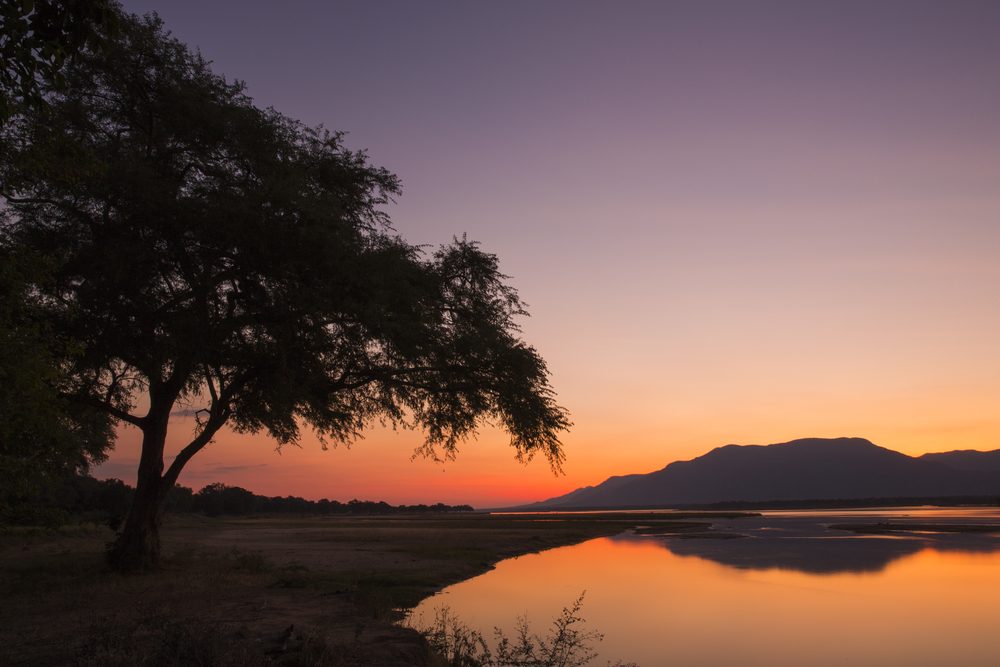
Mana Pools National Park, a UNESCO World Heritage Site, is the undisputed crown jewel of Zimbabwean safari destinations. Situated on the lush floodplains of the mighty Zambezi River, this park offers an unparalleled authentic walking safari experience. Renowned for its breathtaking scenic beauty and incredible concentration of wildlife, it is a premier destination for adventure travel and high-end ecotourism.
The park’s name comes from the four main oxbow lakes (“mana” means four) that remain from the river’s ancient course, creating a unique ecosystem that attracts massive herds of elephant, buffalo, zebra, and predators, especially in the dry season. What truly sets Mana apart is the opportunity for un-guided walking (for experienced visitors) and canoe safaris along the Zambezi, allowing for intimate and thrilling wildlife encounters on their own terms.
This commitment to a raw, low-impact experience underscores its status as a model for sustainable tourism and biodiversity conservation. With a limited number of visitors and a focus on seasonal camps and true wilderness immersion, Mana Pools delivers a profound and personal connection to the wild, making it a bucket-list destination for discerning travelers and photographers from around the globe.
Ideal for: Experienced safari-goers, professional photographers, adventure seekers, walking safari enthusiasts, and those seeking a truly world-class, immersive wilderness experience.
Key Highlights:
- UNESCO World Heritage Status: Recognized for its pristine wilderness and ecological significance.
- Iconic Canoe Safaris: Paddle down the Zambezi River for a unique perspective on wildlife.
- Walking Safari Capital: The premier park in Africa for un-guided and expert-led walking trails.
- Spectacular Wildlife Viewing: Famous for its “honey badger boys” and elephants standing on hind legs to reach ana trees.
- Exclusive Wilderness: Limited access and low-impact tourism ensure an uncrowded, pristine environment.
4. Gonarezhou National Park:

Meaning “Place of Elephants,” Gonarezhou National Park lives up to its name as a bastion of raw, untamed African wilderness. As a pivotal component of the vast Great Limpopo Transfrontier Park—which links Zimbabwe, South Africa, and Mozambique—this remote sanctuary offers an authentic safari experience for the adventurous traveler. Its landscape is defined by towering baobab trees, rugged sandstone cliffs, and the life-giving Runde River, creating a stunning backdrop for world-class game viewing.
Renowned for its impressive elephant populations and successful conservation success stories, the park provides a sanctuary for a wealth of biodiversity. Visitors can expect thrilling sightings of lions, leopards, wild dogs, and massive herds of buffalo. The iconic Chilojo Cliffs, with their fiery red hues at sunset, present one of the most spectacular photography opportunities in Southern Africa.
Accessible by 4×4 and focused on community-based tourism and sustainable wildlife management, Gonarezhou delivers a truly exclusive and impactful wilderness experience. It is the ultimate destination for those seeking solitude, dramatic landscapes, and the chance to witness a wild Africa reborn.
Ideal for: Intrepid self-drive adventurers, photographers, wilderness purists, and travelers seeking a remote, crowd-free safari that directly supports conservation and local communities.
Key Highlights:
- Iconic Landmarks: Features the breathtaking Chilojo Cliffs and ancient baobab trees.
- Place of Elephants: Famous for its large, impressive-tusked elephant herds.
- Transfrontier Conservation: Part of the massive Great Limpopo Transfrontier Park, allowing for unrestricted wildlife movement.
- Predator Viewing: Strong populations of lion, leopard, and endangered African wild dog.
- Community Partnership: A leading example of how tourism directly benefits local communities and conservation efforts.
5. Matobo National Park:

A UNESCO World Heritage Site, Matobo National Park is a landscape of profound beauty and spiritual significance. Located in southern Zimbabwe, its iconic granite kopjes (rock formations) and deep, silent valleys have been a place of sanctuary and worship for millennia. This protected area offers a unique blend of ancient history. The diverse wildlife, and breathtaking scenic beauty, make it an unmissable cultural and ecotourism destination.
The park is the spiritual heart of the nation, housing the sacred Njelele shrine and the burial site of Cecil John Rhodes at World’s View. It boasts one of the highest concentrations of San Bushman rock art in Southern Africa. It has over 3,000 registered sites depicting exquisite paintings that offer a window into a ancient world.
Beyond its cultural wealth, Matobo is also a vital conservation success story. The park hosts a high density of leopard and the majestic black eagle. It is also home to one of the world’s most successful rhino tracking experiences. Visitors can seek out both black and white rhino.
Activities are wonderfully diverse. They range from guided tours of ancient historical sites to thrilling game drives. For a quieter experience, peaceful hiking trails wind through the park’s mesmerizing rock formations.
Ideal for: History and culture enthusiasts, photographers, rock art admirers, rhino tracking, and travelers seeking a contemplative and spiritually significant experience.
Key Highlights:
- UNESCO World Heritage Status: Recognized for its exceptional cultural and natural importance.
- Ancient Rock Art: Home to an extensive collection of pristine San Bushman paintings.
- Rhino Tracking: Offers some of the best and most intimate white rhino encounters on foot in Africa.
- Spiritual Significance: Contains the burial site of Cecil John Rhodes and sacred shrines.
- Unique Geology: Explore a stunning landscape of balancing rocks and granite domes.
6. Nyanga National Park:
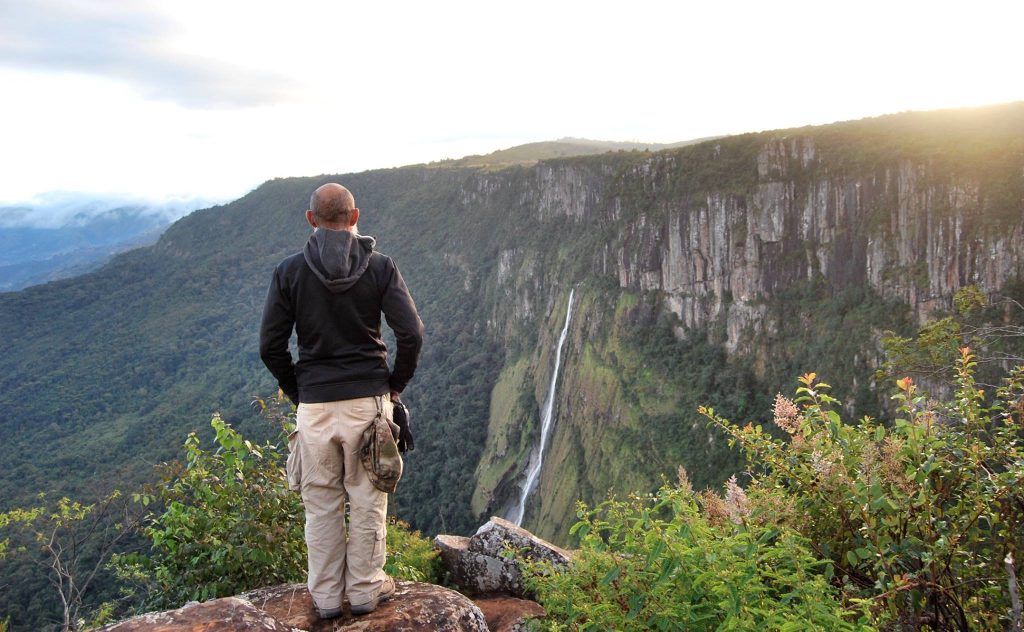
Situated in Zimbabwe’s Eastern Highlands, Nyanga National Park offers a dramatically different experience from the classic lowland safari. As the country’s oldest national park, it is a premier destination for scenic beauty, outdoor adventure, and immersing oneself in a rich cultural heritage. This protected area of rolling green hills, misty mountains, and sparkling waterfalls provides a refreshing retreat and a hub for ecotourism and sustainable travel.
The park is a haven for active pursuits and adventure travel. Visitors can hike to the breathtaking Mtarazi Falls, one of Zimbabwe’s highest waterfalls, explore the mysterious Ancient Ruins of the Nyanga people, or trout fish in the clear, cool mountain streams. The network of trails offers world-class hiking and mountain biking through lush landscapes with panoramic vistas.
With a cooler climate and stunning natural heritage, Nyanga is ideal for those seeking tranquility, outdoor recreation, and a deep connection with history. Its range of accommodation, from historic hotels to campsites nestled in pine forests, caters to all who wish to explore this unique and captivating highland kingdom.
Ideal for: Hikers, trout fishers, history and culture enthusiasts, families, and travelers seeking a cool climate retreat and active outdoor adventure.
Key Highlights:
- Dramatic Landscapes: Home to Zimbabwe’s highest peak, Mount Nyangani, and the stunning Mtarazi Falls.
- Ancient History: Features well-preserved stone ruins and terraces, offering a glimpse into a pre-colonial past.
- Outdoor Activities: A premier destination for hiking, mountain biking, birding, and trout fishing.
- Cool Climate Escape: Offers a refreshing alternative to the lowveld bush with its lush, green scenery.
- Accessible Adventure: Well-maintained roads and a range of facilities make it suitable for various travel styles.
7. Chizarira National Park:

For those who seek the road less traveled, Chizarira National Park stands as Zimbabwe’s most remote and untamed wilderness. Often called “the great barrier,” its vast, rugged terrain is defined by its dramatic position on the escarpment edge of the Zambezi Rift Valley. This immense protected area offers an unparalleled sense of solitude and an authentic back-to-nature experience for the truly adventurous spirit, making it a pinnacle of exclusive ecotourism.
Accessible only by 4×4 and requiring self-sufficiency, Chizarira rewards the intrepid with breathtaking vistas over untouched valleys, deep gorges, and expansive plateaus. It is a vital biodiversity refuge, providing a sanctuary for significant but elusive wildlife, including elephant, buffalo, lion, leopard, and rare antelope like the roan and sable. The park is also a premier birdwatching sanctuary, with over 400 species recorded, including many specials.
With no through roads and basic campsites perched on the escarpment, a visit here is a commitment to pure, off-the-grid adventure travel. It is the ultimate destination for those who wish to disconnect completely and immerse themselves in the raw, unfiltered sounds and sights of the African wild.
Ideal for: Experienced self-drive safari enthusiasts, wilderness purists, birdwatchers, backpack hikers, and adventurers seeking absolute solitude and a true challenge.
Key Highlights:
- Ultimate Seclusion: Zimbabwe’s most remote national park, guaranteeing a truly private experience.
- Dramatic Topography: Offers stunning panoramic views from the Zambezi Escarpment over the valley below.
- Birding Hotspot: An exceptional destination for spotting raptors and avian rarities.
- Elusive Wildlife: Provides opportunities to see rare and shy species in a vast, unspoiled habitat.
- Wilderness Trails: A network of challenging hiking trails for immersive walking safaris.
8. Kazuma Pan National Park:
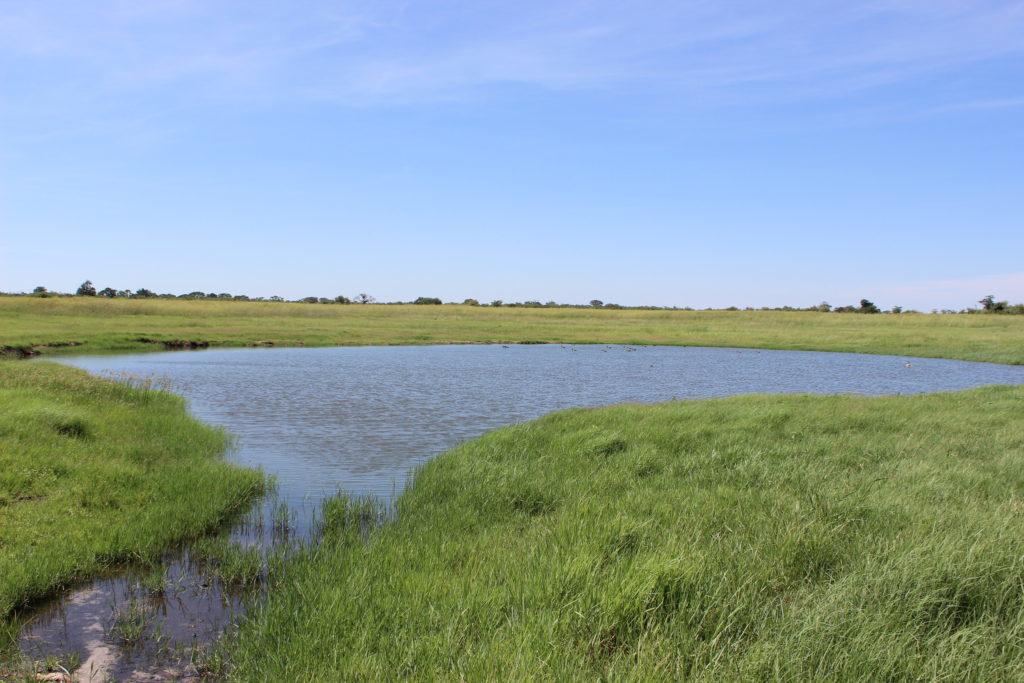
Kazuma Pan National Park is nestled in the remote northwestern corner of Zimbabwe, where it seamlessly blends into Botswana’s famed Chobe National Park, lies a hidden gem for the discerning safari enthusiast: Kazuma Pan National Park. This pristine wilderness offers an exclusive and authentic African safari experience, far from the well-trodden tourist trails. For those seeking sustainable tourism and unparalleled wildlife encounters in a truly secluded setting, Kazuma Pan is Zimbabwe’s best-kept secret.
This compact yet biodiverse protected area is characterized by its vast, open grasslands and seasonal pans that transform into vital water sources during the rainy season, creating a magnet for wildlife. The park forms a critical transfrontier conservation area, allowing for the free movement of elephant herds, buffalo, and predators across international boundaries, ensuring robust and natural ecosystem dynamics.
As a vital component of the Kavango-Zambezi (KAZA) Transfrontier Conservation Area, Kazuma Pan is a testament to Zimbabwe’s dedication to biodiversity conservation and ecotourism. Visitors contribute directly to the preservation of this fragile ecosystem. With basic campsites and no permanent lodges, the experience is raw and immersive, perfect for those who wish to truly disconnect and listen to the unfiltered sounds of the African bush under a canopy of stars.
Ideal for: Discerning safari-goers, self-drive adventurers, photographers, and travelers seeking a exclusive, crowd-free wildlife experience focused on natural heritage and environmental preservation.
Key Highlights:
- Exclusive Wilderness: Experience one of Zimbabwe’s least-visited national parks.
- Spectacular Wildlife: Witness large elephant populations and rare antelope species.
- Critical Conservation: Part of the massive KAZA Transfrontier Conservation Area.
- 4×4 Adventure: Essential for access, offering a true off-grid safari.
- Seasonal Pans: The landscape transforms with the rains, offering dynamic scenery and animal gatherings.
9. Zambezi National Park:
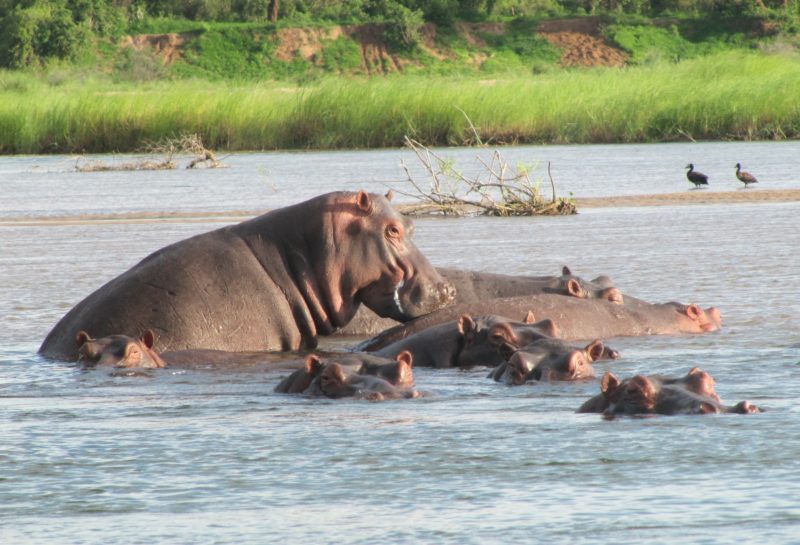
Flanking the iconic Zambezi River just upstream from the world-renowned Victoria Falls, Zambezi National Park is a premier destination for diverse safari experiences and adventure travel in Zimbabwe. This magnificent protected area offers a stunning contrast of riverine landscapes and dense woodlands, creating a critical habitat for an abundance of wildlife and establishing itself as a top ecotourism spot.
Visitors can enjoy a variety of exclusive activities, from thrilling game drives searching for elephant, buffalo, lion, and rare sable antelope to serene sunset river cruises that provide unparalleled water-based game viewing and birdwatching opportunities. The park is a haven for birdlife sanctuary enthusiasts, with over 400 species recorded.
Ideal for: Wildlife enthusiasts, photographers, adventure seekers, and visitors to Victoria Falls looking to combine a world-class wonder with an authentic safari experience without traveling far.
Key Highlights:
- Proximity to Victoria Falls: Easily accessible from the town, perfect for a half-day or full-day safari.
- Diverse Activities: Offers both classic game drives and unique Zambezi River boat cruises.
- Abundant Wildlife: High chance of spotting elephant, buffalo, predators, and rare antelope species.
- Birdwatcher’s Paradise: Home to over 400 species of birds.
- Lodge and Camping Options: Features a range of luxury lodges and campsites to suit different styles and budgets.
10. Matusadona National Park:
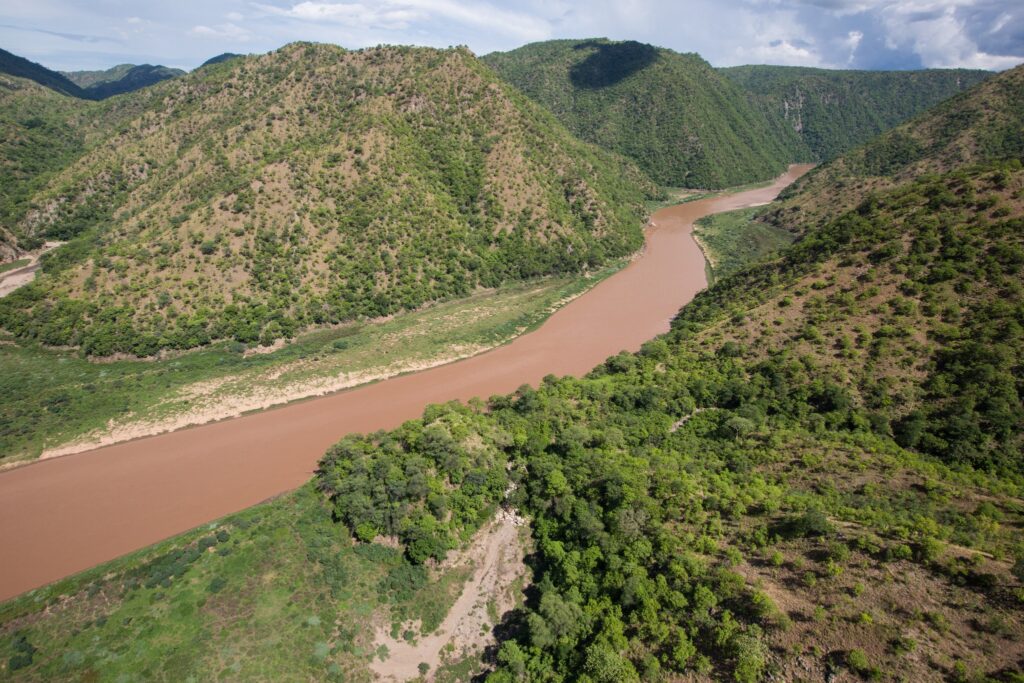
Nestled on the southern shores of the vast Lake Kariba, Matusadona National Park is a rugged and dramatic wilderness, renowned for its diverse ecosystems and exceptional predator viewing. Once a refuge for animals rescued during the historic Operation Noah, this park has flourished into a premier remote safari destination in Zimbabwe, offering an authentic and untamed experience for the intrepid traveler.
The park’s unique landscape, defined by the floodplain grasslands of the Matusadona foothills meeting the lake’s shoreline, creates an ideal habitat for high concentrations of wildlife. This makes for exceptional game viewing, with frequent sightings of lion, leopard, and a healthy black rhino population within its intensive protection zone. The lake itself allows for incredible water-based safaris by boat or canoe, providing a unique perspective on elephants swimming and buffalo grazing along the water’s edge.
Accessible primarily by boat or light aircraft, Matusadona is a bastion of exclusive ecotourism and biodiversity conservation. It offers a range of luxury safari lodges and remote campsites, ensuring an immersive experience under the African stars. This is the ultimate destination for those seeking solitude, dramatic landscapes, and unforgettable wildlife encounters in one of Zimbabwe’s most scenic protected areas.
Ideal for: Intrepid safari purists, photographers, rhino tracking enthusiasts, and travelers seeking a remote, water-and-land-based safari adventure.
Key Highlights:
- Black Rhino Sanctuary: A key area for spotting both black and white rhino in a protected environment.
- Multi-Dimensional Safaris: Combines classic game drives with unique boat and canoe safaris on Lake Kariba.
- High Predator Density: Famous for its lion and leopard populations.
- Stunning Scenery: Dramatic landscapes from the Zambezi Escarpment down to the lake shore.
- Exclusive Seclusion: Limited access guarantees a private and crowd-free wilderness experience.



